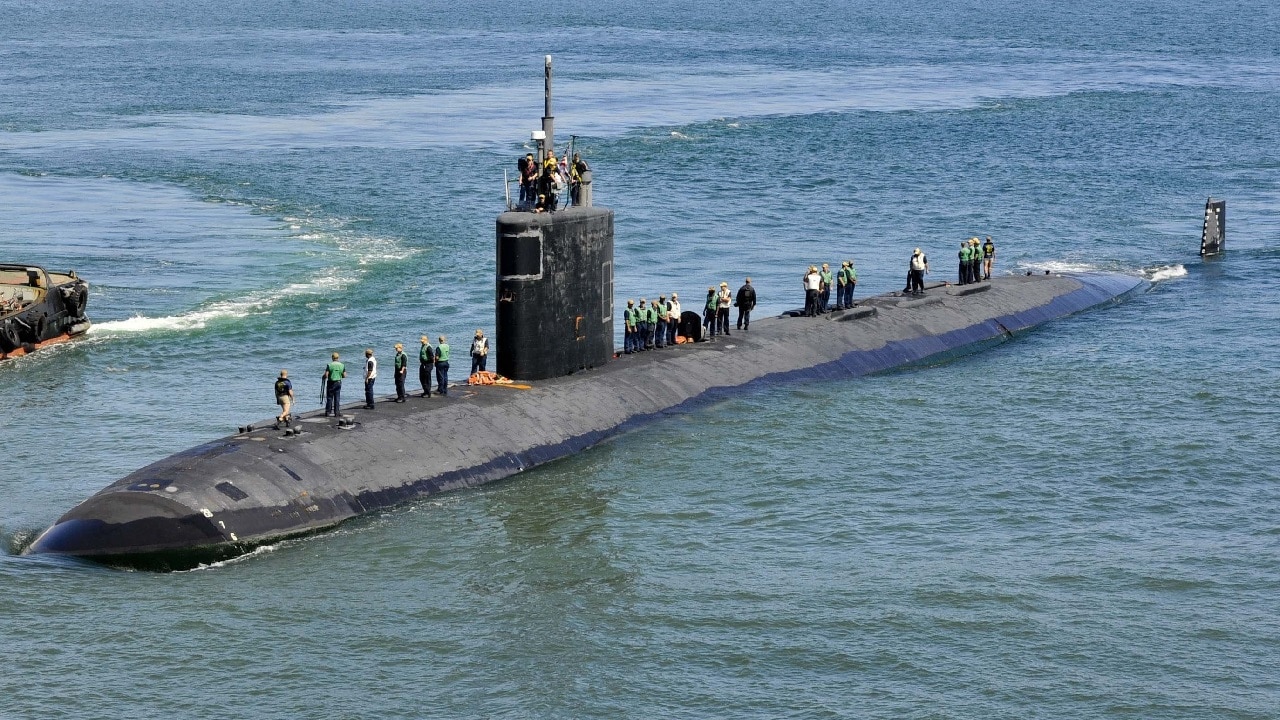In 2003, a $3 billion nuclear-powered submarine ran smack into an undersea mountain.
No one was injured when the USS Hartford (SSN-768) was temporarily grounded in the port of La Maddalena, Sardinia, however, roughly $9 million dollars worth of damage was done to the submarine.
Although the U.S. Navy initially kept the incident under wraps, it ultimately leaked when the ship’s planned six-month deployment was cut short.
Both the captain of the vessel, Commander Christopher R. Van Metre, and his squadron commander, Capt. Greg Parker were relieved of duty following the mishap.
A Brief History of the Los Angeles-Class
As U.S. adversaries continue to advance their own submarine platforms, the Navy relies upon its technical superiority, payload, and strength to maintain its edge below sea level.
The service’s Los Angeles-class submarines have remained a mainstay of its sea-based fleet since its introduction more than five decades ago.
During the Cold War, the Soviet Union’s newer missile submarines became an imminent threat to the U.S. To counter the USSR’s underwater advancements, the Navy developed the Los Angeles-class in the late 1960s.
The new submarines were very similar to their Sturgeon-class predecessor; however, they were larger in frame and faster.
Sixty-two Los Angeles-class submarines have been produced over the years, and some remained in service for almost four decades prior to decommissioning. These submarines depended on a General Electric S6G pressurized water reactor for speed, which allow the ship to travel at speeds faster than 25 knots.
Each submarine can carry roughly 25 torpedo tube-launched weapons and are also capable of launching Tomahawk cruise missiles horizontally.
When the family of submarines was first introduced, these boats were designed with the MK 113 Pargo system. Over the years, however, this system was replaced by the Mark 1 Combat Control System/ All Digital Attack Center.
As detailed by Naval Technology, “The submarine is armed with both the land-attack and anti-ship version of the Tomahawk missile from Raytheon. The land-attack Tomahawk has a range of 2,500km. A TAINS (Tercom Aided Inertial Navigation System) guides the missile towards the target flying at subsonic speed at an altitude of 20m to 100m. Block III improvements include an improved propulsion system and Navstar Global Positioning System (GPS) guidance capability.”
The last 23 ships of the Los Angeles series are referred to as “Improved 688s” since they can travel more quietly than their peers and host an advanced combat system.
The Navy’s Fast-Attack Sub Dleet is Advancing
Although the Los Angeles-class of submarines was planned to be phased out for its newer and more advanced successor the Sea-wolf class, these old but mighty submarines remain intact as the Navy’s dominant fast attack ships. As a cheaper alternative to the Sea-wolf class, the Virginia fast-attack subs are currently scheduled to replace its Los Angeles predecessors.
The latest iteration of the Virginia-class series will be fitted with the Virginia Payload Module (VPM), which will allow the new submarines to carry three times more Tomahawk missiles than previous blocks. Despite the Virginia-class’ advancements, the Los Angeles submarines will always be revered by industry experts and military buffs alike.
Maya Carlin, a Senior Editor for 19FortyFive, is an analyst with the Center for Security Policy and a former Anna Sobol Levy Fellow at IDC Herzliya in Israel. She has by-lines in many publications, including The National Interest, Jerusalem Post, and Times of Israel. You can follow her on Twitter: @MayaCarlin.
From the Vault
The Navy Sent 4 Battleships To Attack North Korea
‘Sir, We Hit a Russian Submarine’: A U.S. Navy Sub Collided with a Nuclear Attack Sub

